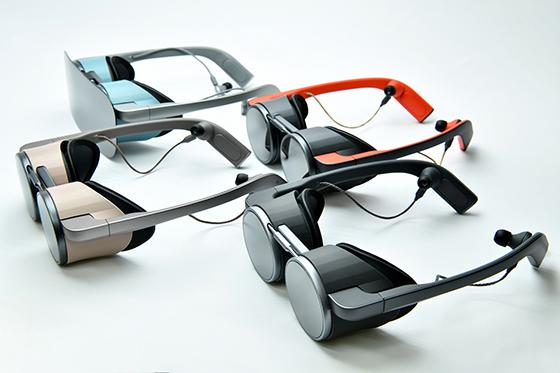January 6, 2020 – Panasonic Corporation has announced that it has developed a pair of High Dynamic Range (HDR) capable ultra high definition (UHD) virtual reality eyeglasses, which the company states boast a comfortable fit that make users feel as if they were wearing eyeglasses.
While conventional VR headsets with high-quality images and high sound quality provide users with highly immersive simulated experiences, these headsets tend to be larger in size and require users to strap them to their head with a headband, which can cause discomfort to the wearer.
According to the company, with anticipation of the forthcoming full-fledged commercial services of the fifth generation (5G) mobile communications system, a number of new services using VR glasses are expected to be offered, including for VR sports viewing and engaging virtual travel experiences.
As a result, for its new VR glasses, Panasonic has developed a high performance display device in cooperation with Kopin Corporation, a manufacturer of display devices for VR glasses. In addition, Panasonic’s own audio and visual technologies have been incorporated into the new device, including signal processing technologies cultivated through the development of video equipment such as TVs and Blu-ray Disc players, acoustic technologies of Technics audio products, and optical technologies used in the company’s Lumix digital cameras. Panasonic states that these technologies have enabled it to achieve “compact and lightweight VR glasses offering high-quality images and optimal sound that deliver realistic sensations drawing the user into the images projected before their eyes, while in the comfort of wearing eyeglasses.”
The main features of Panasonic’s new product include:
UHD high-quality images:
- The device is capable of displaying HDR images;
- Equipped with a micro OLED panel co-developed by Kopin Corporation and Panasonic;
- Natural and smooth images without “Screen door effect”, which is a visual artifact of displays, where the fine lines separating pixels become visible in the displayed image;
High-quality sound:
- The adoption of Technics‘ original dynamic driver using magnetic fluid allows for ultra low distortion audio;
- Capable of reproducing a wide range of frequencies from ultra-low to high;
Compact and lightweight design:
- A compact and lightweight design allows for the eyeglass-style VR device to be worn in comfort without the need for a headband;
- The adoption of an optical module newly developed by Kopin Corporation, 3M Company, and Panasonic allows for the display of natural and distortion-free images in super single focus.
In preparation for the anticipated full-scale commercial adoption of 5G and all that it will enable, Panasonic has stated that it will continue to further develop its new VR glasses so that they can be used in a variety of applications.
The company will be exhibiting its latest offering as a reference product at CES 2020 in Las Vegas, Nevada this week.
Image credit: Panasonic
About the author
Sam is the Founder and Managing Editor of Auganix. With a background in research and report writing, he has been covering XR industry news for the past seven years.

 In
In